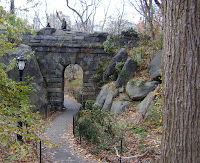“The idea was to impress visitors with what they saw both up
close and at a distance” (17).
The Book
 Navy Pier: A Chicago
Landmark by Douglas Bukowski is a well written, detailed,
and interesting history of Chicago’s
3,000 foot pier. Bukowski includes many pictures from the beginning of Chicago up to the pier
today.
Navy Pier: A Chicago
Landmark by Douglas Bukowski is a well written, detailed,
and interesting history of Chicago’s
3,000 foot pier. Bukowski includes many pictures from the beginning of Chicago up to the pier
today.
Bukowski traces the idea of a pier from Daniel Burnham’s
1909 Chicago Plan to the renovation in the mid-1990s. Charles Summer Frost was
chosen to design the Municipal Pier in 1913 and it was dedicated in 1916. The
pier was used for military training in both World Wars. It saw the training of
carrier pigeons in World War I and the training of Navy pilots in World War II.
The name was changed to Navy Pier, in 1927, to honor those who served during
World War I. In between the World Wars, the pier became a “place where people
could enjoy themselves without fear of violence or moral corruption” (23). During
this time, an emphasis was placed on the civic education of the people of Chicago.
Bukowski tells of the growing pains Navy Pier experienced
after World War II. The University
of Illinois used the pier
as a satellite campus from 1947-1964. At the end of that time, the pier was in
disrepair from so many different uses and alterations. The upcoming American
Bicentennial brought about new restoration for the pier and a renewed interest.
Bukowski defines the mid-1990s renovation as a close return to Daniel Burnham’s
original plan.
The Place
 Navy Pier is a place that all ages can have fun exploring. There are
high-end restaurants, fast-food, and Chicago
favorites. A children’s museum and funhouse can entertain children for hours.
An IMAX theater shows new releases and documentaries. The Shakespeare Theatre
is located on the pier, along with the Skyline Stage for concerts.
Navy Pier is a place that all ages can have fun exploring. There are
high-end restaurants, fast-food, and Chicago
favorites. A children’s museum and funhouse can entertain children for hours.
An IMAX theater shows new releases and documentaries. The Shakespeare Theatre
is located on the pier, along with the Skyline Stage for concerts.













